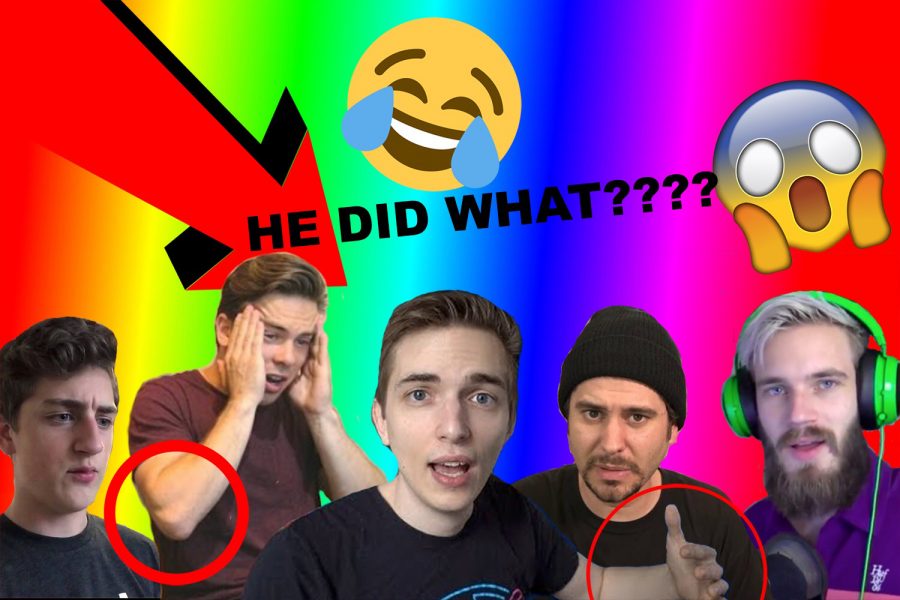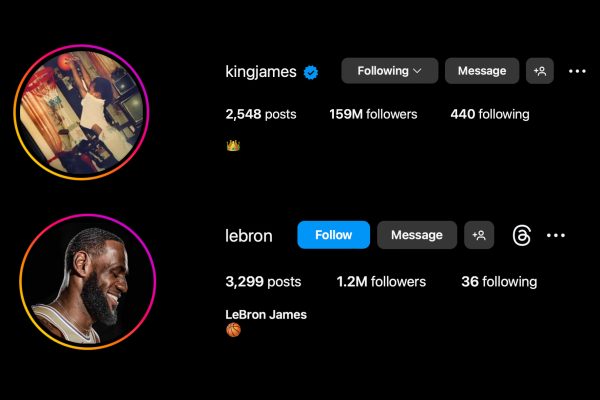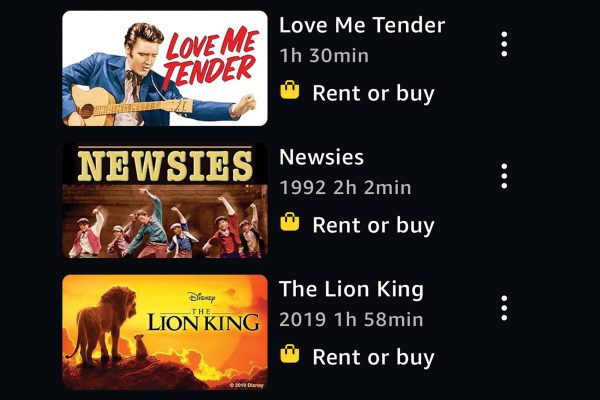Exposing commentary Youtubers
The truth behind YouTube’s content recyclers
December 3, 2018
Jake Paul, Dr. Phil and Billion Surprise Toys. Just three examples of vastly different entities connected by an unlikely thread. A thread that takes these videos, whether offensive, awkward or just weird, and makes something new. These creators are the recyclers of the web, stripping the cringe from content and leaving behind a cynically clever, perfectly packaged video.
These recyclers are called commentary channels. Commentary channels have long been a part of Youtube but seem to be ever-growing in popularity. While last year’s trend seemed to be vloggers, this year marks the rise of the commentator.
The content produced by commentators could range from exposing a pedophile, to laughing at a kid’s homemade YouTube videos, and this gulf of difference is what causes some viewers to pause. Some question if all this negativity creates an overly critical environment, and so the debate remains ever present: are commentary channels doing more bad than good?
The appeal of commentary channels is not lacking, however. The guilt some may feel from hearing them “roast” others does not outweigh the hilarity of their statements. Whether it be through a Cody Ko and Noel Miller installation of “That’s Cringe” or one of Pewdiepie’s famous “Meme Reviews,” the laughs are not lacking.
We need these warriors of the internet, these “content cops,” to hold channels accountable that pervert the minds of children and rely on clickbait to reel in young kids to make their money and increase their views. The people that commentary creators are calling out prey on kids with sexual content, scams and fake pranks being sold as real.
Commentary channel J Aubrey posted a video on Tik Tok user “thebudday” exposing his inappropriate conduct with underage girls through the lip syncing app, and while not everyone they review is a pedophile, this video is an extreme example of a sort of new wave vigilante media, surpassing the mainstream outlets and bringing offenders straight to the people through videos and tweets.
Youtuber Eddy Burback also called out fellow creator Brent Rivera for making inappropriate videos with his sister and 11-year-old cousin. Commentary creators are the forerunners of justice on the internet and act as a sort of “neighborhood watch” to help stamp out sexual content being advertised to kids.
Following the exposure train, many commentary channels have reported on various scams, ranging from Drew Gooden’s analysis of Jake Paul’s underwhelming live show to h3h3production’s criticism of cryptocurrency. Criticizing overpriced merch and holding creators accountable for their products keeps YouTubers honest, as in the case of the recent criticism of vlogger Emma Chamberlain’s merch by multiple commentary channels and in the case of Youtuber Zoe “Zoella” Sugg’s overpriced advent calendar.
Commentary channels, while ruthlessly making fun of other creators, allow a space for fans and haters alike to come together and be educated on issues that the mainstream media doesn’t cover, issues more centered around low profile influencers and for a younger audience.
Commentary creators are also famous for letting the world know how fake people are — specifically pranksters. Drew Gooden gained considerable notoriety from his video on the Dobre Brothers, a channel focused on brothers who prank, sing and pretend to buy private jets. While prank videos are not inherently bad, selling fake content disguised as being real to children is. Because children can be so naive, marketing pranks as being legit that are obviously staged is a both a scam and disrespectful to the audience supporting the channel. The controversial commentary channels are working to prevent this.
Fan interaction is an integral part of a commentator’s content. They often accept tweets, videos and Instagram direct messages as a source of inspiration from their fans. This interaction is part of their appeal and places them in a more desirable position than that of the channels they critique, which normally have a higher subscriber count and less communication with their supporters.
A familial setting often accumulates around commentator channels, and as a result, they tend to be much more casual. This leads to inside jokes, profusive cursing and the overall sense that watching a commentary video is a two-way relationship, not a lone viewer watching a celebrity. Commentators work hard and face challenges that many other YouTubers don’t. Copyright claims are a constant burden, and the stress of working with brands in order to stay afloat is a topic many commentators are open to talking about. Honest frustrations about YouTube, brands and video-making in general are often vented and give the audience a personal look behind the scenes of their favorite content.
Irony is the backbone of most commentary channels. An aspect of comedy that is often hard to perfect, irony is accomplished with ease by creators like Danny Gonzalez, Eddy Burback and Kurtis Conner. These YouTubers all use ironic comedy to poke fun at overused tropes and make statements that are just plain weird. For example, when contacted for an interview, these creators replied with tweets that, to outsiders, seem like pure nonsense:
drew just texted me and said to tell you “eddy is the funniest person i know and im a little baby boy with baby feet and arms and legs”
idk if his twitter is broken or something but he wanted me to say that for him ??♂️
— Eddy Burbackmas?? (@eddyburback) November 27, 2018
“I’m the most precious baby boy” Can you put that in your school newspaper please? https://t.co/SiaH2aOmJP
— Danny Gonzalez (@dannygonzalez) November 27, 2018
“I’m literally the strongest man in the world”
thank you 🙂
— kurtis conner (@kurtisconner) November 27, 2018
But to their audiences, these types of strange comments are the norm. From Cody Ko’s parodies of Life Hack videos to Leon Lush’s comments on “Insufferable Instagrams,” these creators embrace the irony of using “bad” videos to make their content. They are self-aware and use self-deprecating humor.
However, the counterargument for commentary channels is not easily overlooked. These channels are based on other people’s content, and this opens them up to comments about laziness and their reliance on terrible content, sometimes made by terrible people, to make a living. They intentionally use popular vloggers in thumbnails and profit off of their fame. But commentary channels don’t merely repost what others have made; they make something entirely new. The comedy bits, editing and creativity are purely the content of commentators.
Taking something that already exists and making it comedy isn’t a new fad. Situational and observational comedy have existed for decades, and it is not difficult to draw similarities between Jerry Seinfeld’s witty stand-up on society and the videos YouTubers make on the world they witness online. Just because Seinfeld’s audience wasn’t digital doesn’t mean that modern-day online creators should be dismissed.






















Poppy Clitheroe • Oct 20, 2020 at 11:52 am
This was superbly well written, People paid to write on “journalism” sites who are at least five (if not 10+ yr) older than both of you are turning out content half as well written – let alone as incisive, or even as succinct – as this.
I particularly like the Seinfeld analogy – I will be using this one on some relatives criticising commentary channel people, soon.
ok • Apr 25, 2020 at 5:59 am
clickbait.
Alex Graves • Feb 4, 2019 at 2:20 am
Great piece. However I feel that the Headline and subheader are more clickbait than informative. This article isn’t about ‘Exposing’ or sharing some hidden ‘truth’. It’s just about describing the youtube commentator and their place in the youtube world, and it does a great job at it. This also confuses the tone of the title/article. headline makes it seem as if you are anti-commentary youtuber, however only at the very end of the article, in the final paragraphs, do you mention the negatives of ‘content recycling’, while quickly explaining the problem away in the next sentence. I agree with all the points you made and think this is a well-written piece, just make sure your article titles match the content inside.
Emily • Dec 23, 2018 at 6:57 am
I found this through Danny’s baby boy tweet. The article was super well-written and it’s weird to think that people being blatantly bizarre are doing some good.